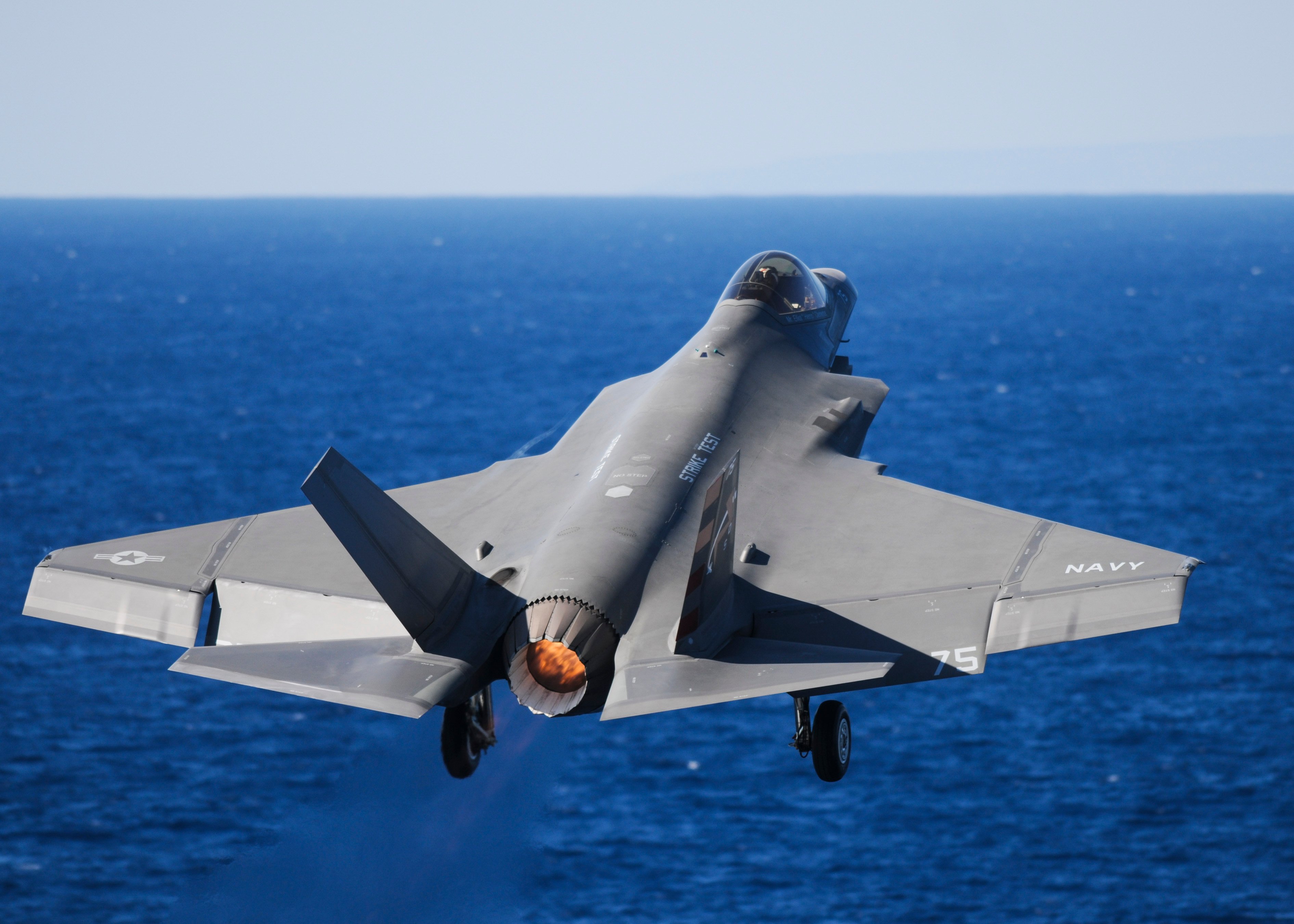
NATIONAL HARBOR, Md. – Success in a future operating environment will depend on networking – sharing data among sensors and weapons, weaving together the various domains, and bringing in manned and unmanned systems into the same decision loop – the Navy’s deputy chief of naval operations for warfare systems (OPNAV N9) said Tuesday at the Navy League’s Sea-Air-Space Exposition 2016.
Rear Adm. Mike Manazir said during a panel discussion that creating these networks would be the key to success in “fifth-generation” warfare. As the Navy buys and operates planes, ships, missiles and more, the collective capability of the networked architecture will be more important than the individual systems’ specifications – an instance of the whole being greater than the sum of its parts, according the admiral.
“It has to be networks and capabilities – not just the platforms –we’re fielding,” he said.
“So I focus on capabilities, not platforms – I don’t as much care about, I need this many [Joint Strike Fighters] or this many Super Hornets or this many Littoral Combat Ships or this many DDG Fight IIs; it’s, what are we going to do to connect those platforms, and then ultimately get back to the platforms that we buy.”
Manazir, who until earlier this month served as the director of air warfare (OPNAV N98), is now in a position to act with this holistic approach: rather than only overseeing systems requirements for the air domain, his portfolio will now include the surface, expeditionary, undersea and unmanned systems warfare directorates as well.
During his speech, Manazir gave some insight into his goals for his new job.
“How do I turn a kill chain into a kill web?” he said of the detect-to-engage process. He said today there is a surface-to-surface kill chain that surface ships use, and an undersea-to-surface kill chain for submarines, and so on. By drawing lines between each kill chain’s sensors and shooters, from the air to the subsurface, the Navy would create a “resilient kill web” that shares data in real time across domains.
The Navy – through its Program Executive Offices (PEOs) for Integrated Warfare Systems (IWS) and Unmanned Aviation and Strike Weapons – has recently tied together a network for anti-surface warfare, called a “tactical cloud,” to disseminate targeting data to all the air-launched, surface-launched and subsurface-launched weapons tapped into the network.
The Navy’s more mature network architecture, Naval Integrated Fire Control-Counter Air (NIFC-CA), links together sensors, shooters and sharers to target enemy missiles and air threats – which move at high rates of speed and therefore require highly accurate targeting tracks to engage the threat. Surface threats – ships – move much slower, and therefore a greater number of Navy sensors could generate good enough data to inform the new so-called All-Domain Offensive Surface Warfare Capability and help target enemy warships.
In addition to the surface warfare capability and NIFC-CA, several Navy officials have discussed an ongoing counter-undersea network – called NIFC-CU – as well, which is still early in development, USNI News understands. And, PEO IWS Rear Adm. Jon Hill said in the same panel presentation, the Navy isn’t done yet.
“We’ve begun … with NIFC-CA and variants of that architecture. We’re going to continue to explore variants of that architecture,” he said. Highlighting the challenge of these netted offensive warfare architectures, Hill said “every architecture I look at, I always walk away and say we’re sensor-poor, so that’s why I talked about leveraging the P-3, leveraging the F-35 – we’re going to continue to look for new sensors and new capabilities.
“So the hypothesis is that we’ll expand that fleet tactical grid,” Hill continued.
“If you look at payloads, platforms and weapons and sensors and you bring those together, the more of that integration that we can do, the more of those cooperative engagement modes that we develop, the bigger that fleet tactical grid grows. The prediction is that we’ll have increased sensor contributions, we’ll get special maneuver and we’ll have distributed engagement options and expand the battle space.”
Also in the presentation, Manazir talked about integrating human and machine to speed up the OODA loop of observing, orienting, deciding and acting. He said that many people think about unmanned systems as being useful only for dull, dirty and dangerous tasks, but he envisions pairing unmanned systems with people to react to a situation faster and smarter than the enemy can.
“When I think about unmanned, about man-machine teaming, what if we could have a machine do the OO part of the OODA loop? The machine at machine-speed could orient … that machine gives you [situational awareness] … so if the machine is doing OO then the man is doing the DA part,” Manazir said.
He also spoke of integrating live, virtual and constructive training opportunities – in training events that include sailors in planes and in simulators and computer-controlled actors – to allow collaborative training between personnel in different locations, as well as to train to high-end warfare skills that could not be replicated without the aid of virtual reality.





